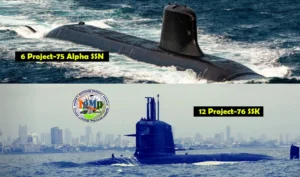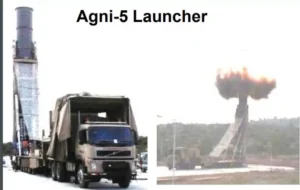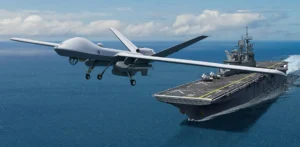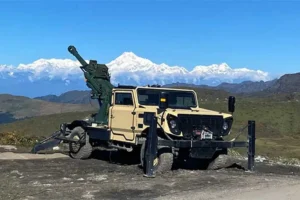US B-52 bombers have participated in a joint training exercise with the Japanese Air Force, flying over the Sea of Japan and around Okinawa.
In an official statement, the Japan Air Self-Defense Force (JASDF) announced that on October 17, they, along with the US Air Force, held joint training exercises to strengthen the deterrence and response capabilities of the Japan-US Alliance.
The Pacific Air Forces, based in Hawaii, also shared the exercise’s particulars on their X account, previously known as Twitter.
Additionally, the service released a photo depicting a USAF B-52H from the 96th Bomb Squadron, 2nd Bomb Wing, flying in formation with two JASDF F-15Js assigned to the 306th Tactical Fighter Squadron, 6th Air Wing.
Meanwhile, the Japan Air Self-Defense Force mentioned that their contingent in the flight comprised 4 F-15s from the 2nd Air Wing (Chitose), 4 F-15s from the 6th Air Wing (Komatsu), and 4 F-15s from the 9th Air Wing (Naha).
U.S. Forces conducted a bilateral training flight alongside @JASDF_PAO_ENG over the Sea of Japan, and around Okinawa to enhance the Japan-U.S. bilateral response capabilities and tactical skills. The flight included JASDF F-15s; United States Air Force B-52s, F-35As, and a KC-135 pic.twitter.com/iB2bfLJ0Uu
— PACAF (@PACAF) October 17, 2023
On the other hand, the US Air Force contributed a more versatile lineup, comprising 2 B-52s, 6 F-35As, and 1 KC-135 aircraft, showcasing the multi-dimensional and collaborative nature of the joint training exercise.
The announcement was made just a day after a duo of Russian Tu-95MS strategic bombers, accompanied by Su-35 fighter jets, carried out a seven-hour flight mission over the expanse of the Sea of Japan.
Furthermore, on October 17, a US B-52 strategic bomber, in a rare occurrence, conducted a landing at an airbase located in the central South Korean city of Cheongju.
This landing occurred after the bomber’s involvement in joint military exercises conducted by South Korea and the United States.
The United States Forces Korea said that the bomber’s visit underscores the United States’ unwavering commitment to safeguarding South Korea from potential North Korean threats.
Moreover, according to an undisclosed South Korean military official speaking with the Yonhap News Agency, fighter aircraft from the United States, South Korea, and Japan are set to escort the B-52 during an aerial exercise over the Korean Peninsula scheduled for October 22.
Bomber Deployment Escalates Across The Pacific
Amid mounting apprehensions surrounding the potential for China’s intervention in Taiwan and North Korea’s assertive missile testing activities, the US Air Force has intensified the frequency of deploying bombers within the Pacific region as a proactive measure to address these regional security challenges.
In July, it was disclosed that over the preceding six months, the US Air Force had conducted over half a dozen sorties over the Korean Peninsula and engaged in numerous integration exercises with the Japan Air Self-Defense Force, underscoring the ongoing efforts to enhance regional security and cooperation.
The recent landing of the B-52H Stratofortress on the Korean Peninsula also marks a significant milestone, as it represents the first time this renowned bomber has set down in South Korea in at least three decades.
At the time, Maj. Rachel Buitrago, 7th Air Force Public Affairs director, said, “These flyovers, air demonstrations, and static displays, including the landing for the B-52 on the peninsula, is part of our continued pledge to promote peace, stability, and prosperity on the Korean peninsula.”
The B-52 Stratofortress, also known as BUFF (Big Ugly Fat Fellow), serves as the primary cruise missile carrier for the Air Force, with the H model currently representing the last active variant of this venerable aircraft, which has remained in service since the 1950s.
While B-52 landings in Korea have been rare, the aircraft has been involved in several recent drills either above or near the Korean Peninsula.
On June 30, multiple B-52s from Barksdale Air Force Base, accompanied by F-16s, F-15Es, South Korean F-35As, and KF-16s, jointly soared over the nation.
As for Japan, over 25 Airmen and two B-1B Lancers from Dyess Air Force Base in Texas landed at Misawa Air Base on July 10 as part of their contribution to Pacific Air Forces’ Bomber Task Force (BTF) missions.

This a notable development, as historically, B-1s have had limited involvement in Bomber Task Force missions from Japan.
In addition to these deployments, a historic milestone was achieved in June when, for the first time, a US Air Force B-52 bomber was stationed in Indonesia, a South Pacific nation situated approximately 2,000 miles south of China.
This strategic positioning places it within reach of key regions like the South China Sea, Taiwan, and other nearby critical areas.
The notable upsurge in the deployment of these bombers underscores the United States’ expanding commitment to bolster its presence in the region, aimed at deterring the activities and influence of China, North Korea, and Russia.
Source link








